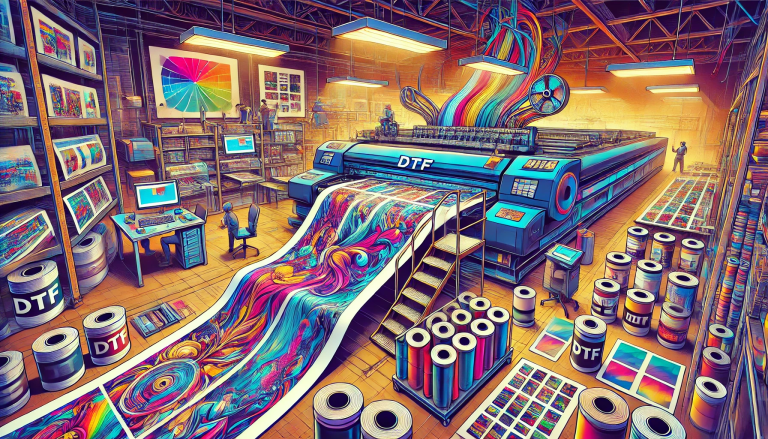In the rapidly evolving world of printing technology, one innovation that has made significant strides is Direct to Film (DTF) printing. This method has revolutionized how graphics are transferred onto various materials, providing a flexible, efficient, and high-quality alternative to traditional printing techniques. DTF printing stands out for its versatility, enabling the creation of vibrant and durable prints on a wide range of fabrics and items. This article delves into the intricacies of DTF printing, exploring its mechanisms, advantages, applications, and the future it holds within the printing industry.
The Mechanism Behind DTF Printing
Direct to Film printing involves a process where designs are printed onto a special film before being transferred onto the desired substrate. Unlike Direct to Garment (DTG) printing, which requires the fabric to be pre-treated, DTF can be applied to any type of fabric, including polyester, cotton, silk, and even non-textile materials. The process involves printing a mirror image of the desired design onto a clear PET film coated with an adhesive powder. After printing, the design is melted onto the film, and then it’s ready to be transferred onto the fabric through heat and pressure.
Advantages Over Traditional Methods
DTF printing holds several advantages over traditional printing methods such as screen printing and DTG. One of the most significant benefits is its flexibility. DTF allows for printing on a broader array of materials and complex fabric blends without the need for pre-treatment. This not only saves time but also opens up new avenues for creativity and product diversity.
Additionally, DTF stands out for its color vibrancy and print quality. The technology enables the production of prints with a wide color gamut and excellent detail resolution. Furthermore, prints made with DTF technology are known for their durability, withstanding washes and wear better than many traditional methods.
Applications and Potential
The applications of DTF printing are vast and varied, covering everything from fashion and apparel to home decor and promotional items. It’s particularly beneficial for small businesses and startups due to its low setup costs and the ability to produce small runs economically. This makes it an ideal solution for custom orders, limited edition items, and on-demand printing services.
Moreover, DTF’s capability to print on a variety of substrates beyond textiles, such as leather and hard surfaces, has opened up new markets and possibilities. Customized phone cases, bags, shoes, and even interior design elements are now within reach, enabling designers and creators to push the boundaries of their creativity.
The Future of DTF Printing
As technology continues to advance, the future of DTF printing looks promising. Ongoing developments in ink formulas, film quality, and printing equipment are expected to further enhance the efficiency, sustainability, and range of applications for DTF printing. With a growing interest in personalized and custom-made products, the demand for flexible printing solutions like DTF is anticipated to rise.
Furthermore, as sustainability becomes increasingly important, the eco-friendly aspects of DTF printing, such as reduced waste and the potential for using biodegradable films and eco-conscious inks, will likely become significant selling points.
Conclusion
Direct to Film printing has emerged as a game-changer in the world of printing technology. Its versatility, efficiency, and high-quality outputs have made it a preferred choice for a wide range of applications. As the technology continues to evolve, DTF printing is set to redefine the boundaries of creativity and innovation in the printing industry. With its potential for further growth and development, DTF printing not only offers a glimpse into the future of printing but also establishes a new standard for quality and versatility in the present.



